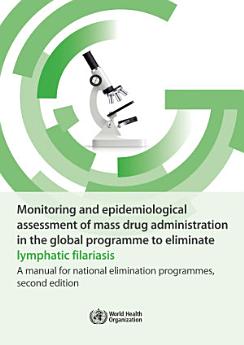Monitoring and epidemiological assessment of mass drug administration in the global programme to eliminate lymphatic filariasis: a manual for national elimination programmes, Edition 2
World Health Organization
Jul 2025 · World Health Organization
Ebook
156
Pages
family_home
Eligible
info
reportRatings and reviews aren’t verified Learn More
About this ebook
The Global Programme to Eliminate Lymphatic Filariasis (GPELF), launched by the World Health Organization (WHO) in 2000, had two strategic aims: to interrupt transmission of lymphatic filariasis (LF) through mass drug administration (MDA) and to alleviate the suffering of people affected by the disease. Monitoring and evaluation has been essential in generating evidence for programme decisions, such as when to start and stop MDA. In 2011, WHO published the Monitoring and Epidemiological Assessment of Mass Drug Administration: a manual for national lymphatic filariasis elimination programmes, which introduced transmission assessment surveys (TAS) to standardize the strategy for deciding to stop MDA and to conduct post-MDA surveillance. This 2nd edition of the 2011 guidance includes a new mapping protocol, best practices and new tools for monitoring MDA coverage, a replacement of pre-TAS with the epidemiological monitoring surveys (EMS), a strengthened TAS with lower threshold for deciding to stop treatment, a protocol for measuring the impact of the triple therapy regimen of ivermectin, diethylcarbamazine and albendazole and more detailed guidance for following up people found to be infected during surveys. Finally tools and guidance are provided to help national programmes mitigate persistent transmission, and new guidance is introduced, outlining possible platforms for post-validation surveillance. Tools to support implementation of the new M&E framework are provided in annexes.
Rate this ebook
Tell us what you think.
Reading information
Smartphones and tablets
Install the Google Play Books app for Android and iPad/iPhone. It syncs automatically with your account and allows you to read online or offline wherever you are.
Laptops and computers
You can listen to audiobooks purchased on Google Play using your computer's web browser.
eReaders and other devices
To read on e-ink devices like Kobo eReaders, you'll need to download a file and transfer it to your device. Follow the detailed Help Center instructions to transfer the files to supported eReaders.








